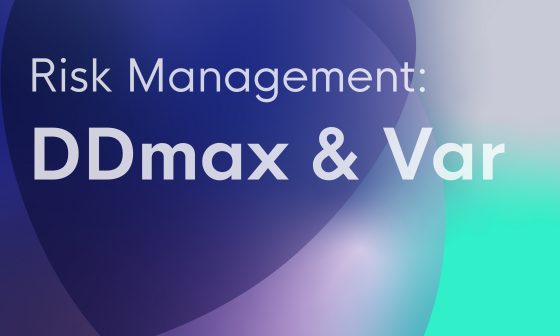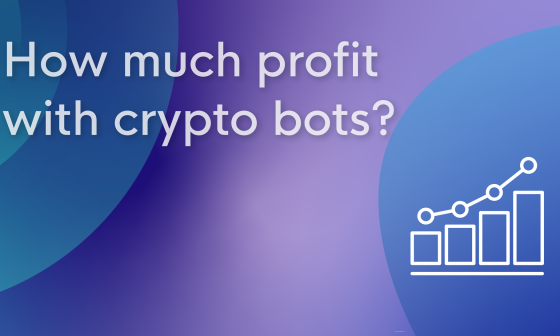Bitcoin vs gold is the main battle of assets and we discussed this at lengths here.
But what about Bitcoin vs other crypto currencies like Ethereum? It’s known that they theoretically have an infinite supply. Is that a reason for concern? More importantly should that deter you from trading them, exploring trading strategies, and having them as long-term holds?

Source: WorldSpectrum from Pixabay
Bitcoin and inflation
Bitcoin’s liquidity, transparency, rarity, baseline value and declining volatility position it very well to be a safe-haven asset. In 2020 it saw so much in terms of institutional involvement that it is hard to deny the young asset’s legitimacy. Hiking to all-time-high post halving positions it very well to become undeniable.
The main catch is that only 21 million Bitcoin will be mined, with around 18.5 million already unearthed. Add all the lost Bitcoin from forgotten private keys and similar events and you get a perfect supply-side scarcity blend.
Ethereum and inflation
While explaining Bitcoin’s diminishing inflation is a piece of cake, understanding how its younger brother is designed in this respect takes a bit more effort. We’ll need to look at 3 major points: the historical reduction of rewards, Ethereum 2.0, and the potential of DeFi.
1.Ethereum’s historical reduction of rewards
The second largest crypto currency is not without its own mechanisms to fight inflation. Miners rewards have already been reduced from 5 to 3 and finally 2 ETH per block due to prices going to what can only be described as the moon in 2017. This has had a negative effect on inflation, reducing it to a bit over 4%:

Source: Coinmetrics.io
The token is not without a supply side hardcap. Its production is limited to 18 million a year, with a possible hardcap on total suply proposed by the creator Vitalik. While the proposal has not yet materialized, just by creating a constant number per year, while the monetary base growth means that inflation is continually reducing.
The increase in supply as a % of total supply is reduced as time passes. If the monetary base of Ethereum is 50 million and 18 million ETH is mined, the inflation is 36%. When a few years go by and the monetary base is 100 million, again 18 million ETH is mined. Reducing inflation to 18%, and so on. This was addressed in the whitepaper as well:

Source: Ethereum whitepaper
This explanation cannot be compared to the attractiveness of Bitcoin’s “only 21 million!” but it’s certainly not without its mechanisms to fight inflation.
In the absence of a mysterious, anonymous creator there is a team that is managing the project. As we will see they are not done with thinking about security or inflation.
2.Ethereum 2.0
Now Ethereum is rolling out 2.0. It aims to move from a proof of work (POW) chain like Bitcoin, but a proof of stake chain (POS). The main difference is that miners will no longer receive large rewards for extensive work with their GPU. Instead, stakers need to lock up at least 32 ETH so they can perform validations and get rewards.
Staking and not using a GPU allows for more people to get involved in securing the network. Bitcoin’s issue on this front is that it’s questionable how secure the network will be once the mining rewards drop a few times and miners are pushed to rely on the transaction fees that they facilitate.
In the current Phase 0 there is more than 1 million ETH staked on Ethereum 2 – 68% above the initial target for network launch.

Source: The Block, based on data from Dune Analytics
They are expected to be locked for at least 1 year (indicative) until the start of phase 1.5 of the development roadmap of Ethereum 2, forecasted for 2021.
Moving to POS has another big influence on the creation of Ethereum: its pace is expected to drop. On a recent podcast, Vitalik stated that he expects only around 2 million ETH to be added a year as a worst-case scenario.
With this progress in the roadmap, a part of the supply gets locked, the increase is reduced, and security increases.
3.Ethereum and DeFi
It’s hard to speak about crypto in 2020 without mentioning the ultimate craze. A more detailed explanation on DeFi is available here, but it may also have an impact on Ethereum’s inflation.
A large portion of ETH will be locked up in these apps. The amount is decreasing since the major uptick in the fall, but it does account for a part of the supply, namely 6,7 million ETH:

Source: DeFiPulse
Further in order to do actions that involve moving the tokens the user has to pay gas fees. The gas fees were a problem earlier this year because they were exploding. Now they appear reduced from the peak in September:

Source: Etherscan
DeFi projects are actual application and adoption of Ethereum. It is something that has the potential to make the token even more scarce in terms of speculative investment. Some argue that if this potential would come to fruition, investing in Bitcoin is more akin to buying gold and Ethereum to investing in a start-up.
Ethereum is going to 0
All previous points were touting Ethereum’s ability to battle inflation through application, staking, or adoption.
There’s an argument that Ethereum is going to 0. Apps need the Ethereum blockchain, but do they need ETH? A part of the reasoning has to do with why miners would want the token and not a different one, but the upgrade and recent price movements give the reasons.
The CEO of Block.one attacked the project saying it is “controlled by a cartel that won’t upgrade scalability of protocol.” This is also (coincidentally) the person behind the EOS project. Since the statement the team has been sticking to the roadmap, albeit with some delays.
This is the crux of it really, the long-term price depends on development. Just like a start-up investing in Ethereum and all crypto is investing in potential and future promises. If they don’t come to fruition it will spell trouble.
Ethereum killers
While Ethereum remains the dominant altcoin, speculators have tried to peg the next “Ethereum killer” – the project that brings enough utility to take the crown. This would depend on the project’s ability to excel at scalability, ease of use, business development, infrastructure, and size of balance sheet.
Competitors have been around since EOS and ADA, but none managed to gain as much traction as DOT. Polkadot is now the 4th biggest crypto project by market cap, following only BTC, ETH and USDT. Founded by Ethereum co-founder Gavin Wood, it lets dApp developers create their own blockchain with the ability to communicate with other ledgers. Ethereum is based on smart contacts.
What DOT has managed to do in a short time is impressive, but the capitalisation of Ethereum killers remains relatively small:

Source: Coingecko via Coinbase
It will be interesting to see what happens, but most likely the phrase “killer” is overextended, and we will see coexistence as alternatives. In the same way there is more than one operating system.
Conclusion
Ethereum does not have the sexy marketing phrase to be parroted to investment firms who want to dip their toe into crypto. What is does have is a cap on production, a POS system in development, and an ecosystem of apps being built on it.
It has attracted criticism, and in all likelihood, it will continue to do so. You may not trust the technology, the team, or the product.
However, if you are trading, Ethereum should be on your radar. If the team keeps delivering, inflation should not be an issue that plagues it. Competition will come, but it’s more likely we are looking at coexistence rather than “one project standing” in the end.
The key is to use smart tools that help boost profits while they protect you from the downside. Too many traders trust presumptions on what works best. Check out what has worked best during ETH bull-runs.







